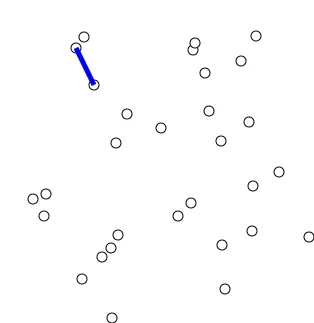Minimum Spanning Tree
Main Source:
Minimum Spanning Tree (MST) is a concept in graph, specifically in a weighted graph, where we need to find the minimum possible total weight for connecting all the vertices. The real world application of this is to make the most effective connection between a set of locations.

Source: https://www.hackerearth.com/practice/algorithms/graphs/minimum-spanning-tree/tutorial/
Notice that we don’t need to explore the entire graph’s edges, we are only needed to connect the vertices. The difficulty of this problem arise when there are a lot of vertices and edges, making us need to choose path carefully, so it can lead to the minimum cost.
Prim’s Algorithm
Section titled “Prim’s Algorithm”Prim’s algorithm is a greedy algorithm that finds a minimum spanning tree for a weighted undirected graph.
function prim(graph, start): MST = set() PQ = PriorityQueue() visited = set()
PQ.add(start, 0)
while PQ is not empty: current = PQ.extractMin()
if current is not in visited: visited.add(current) MST.add(current)
for each neighbor in current's neighbors: if neighbor is not in visited: PQ.add(neighbor, weight(current, neighbor))
return MSTSimilar to Dijkstra’s algorithm, it uses priority queue to help to prioritize the minimum weight and a visited set to keep track the visited vertex.
- It begins from the
startnode, which is initially added to the PQ and extracted immediately. - Ensure that we only visit the node which hasn’t been visited.
- If it hasn’t been visited, add it to the visited set and MST set.
- Iterate over each neighbor of the current vertex, make sure that only neighbors that have not been visited yet are added.

Source: https://en.wikipedia.org/wiki/Prim%27s_algorithm
The complexity depends on the graph representation (e.g., adjacency list or adjacency matrix) and the priority queue implementation (e.g, binary heap or Fibonacci heap). Using adjacency list and binary heap, we can obtain time complexity. Updating a key in the heap takes , updating it for each edge takes . The space complexity would be , which comes from the visited set storing the visited vertices and the heap itself.